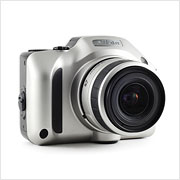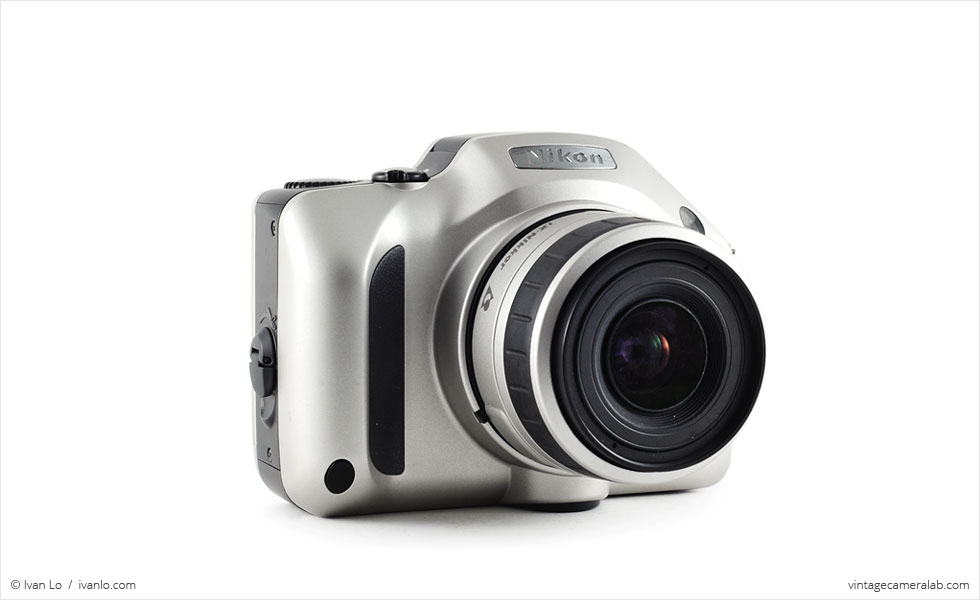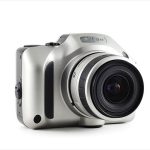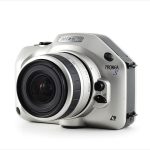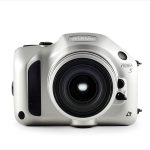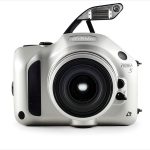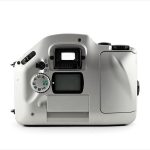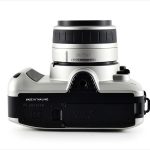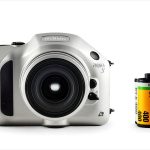Nikon Pronea S Specifications
| Manufacturer: | Nikon Corporation |
| Origin: | Japan |
| Made in: | Thailand |
| Introduced: | 1997 |
| Type: | Single Lens Reflex |
| Lens Mount: | Nikon IX-Mount |
| (Identical to the Nikon F-Mount) | |
| Format: | APS Film |
| Dimensions: | 15 x 8.8 x 5.5 cm (body only) |
| 15 x 8.8 x 9.2 cm (with lens) |
Nikon Pronea S Overview
The Nikon Pronea S is a fully automatic single lens reflex camera designed for the Advanced Photo System (APS) film cartridge. The now discontinued APS film format was launched in 1996, features an automatically loading cartridge aimed at photographers who were willing to trade a smaller frame size for a hassle-free film loading procedure, and was primarily sold by Kodak as Advantix and Fujifilm as Nexia. APS film had the misfortune of competing directly with a fledgling digital photography market which eventually overtook and completely overwhelmed it. Digital cameras had all but annihilated the APS film market by 2001 but it somehow managed to stagger on until it was officially discontinued in 2011.
Although the vast majority of APS cameras are compact point-and-shoots, there were also a small number of compatible SLRs produced to target advanced amateurs and, to a much lesser extent, professionals who had lost their minds. Only three manufacturers offered APS interchangeable lens SLRs: Canon with the EOS IX family, Minolta with the Vectis S line, and, of course, Nikon with the Pronea series. Nikon produced two Pronea cameras: the Pronea 6i (also labeled as the Pronea 600i) which had a metal lens mount and a much more traditional design and the plastic wonder that is the Pronea S. The IX lens mount of the Pronea family is identical to the F-mount and, as a result, the Pronea is compatible with nearly every Nikon lens out there. IX mount lenses like the 30-60mm, however, are not compatible with F-mount cameras as their rear elements extend too far into the body and could make contact with the mirror.
As mentioned earlier, the Pronea S is a fully automatic SLR. Modes are set via the dial on the back next to the LCD screen and can be switched between (going counterclockwise) automatic, program, shutter priority, aperture priority, “night” mode, macro mode, landscape mode, and portrait mode. The black switch directly above the mode selector is specific to APS cameras as it switches between different frame sizes: C for “Classic” (25.1 x 16.7mm), H for “High Definition” (30.2 x 16.7mm), and P for “Panoramic” (30.2 x 9.5mm). However, all frames are exposed in “H” mode regardless of frame choice as the cropping is only performed during the printing process. The only other controls available are a focus mode selector located underneath the lens release button on the front, a command dial on the top plate next to the shutter button and on/off switch, a flash release switch on the shoulder, diopter adjuster just beneath the viewfinder, and several miscellaneous buttons (self-timer, film rewind, flash mode, etc) hidden by a spring-hinged flap under the LCD.
I bought this Pronea S complete with 30-60mm zoom lens and original Nikon neckstrap at a thrift store for the grand sum of $2.99. Cosmetically, the camera is in good nick. However, I’m not sure of its mechanical condition as I have neither the requisite two CR2 batteries or an APS cartridge to try it with. Regardless, this Pronea S has a proud place in my collection alongside my 126 cameras as a reminder of formats past.
Find your very own Nikon Pronea S on eBay.
“Nikon Pronea S,” Camera Wiki, http://camera-wiki.org/wiki/Nikon_Pronea_S
